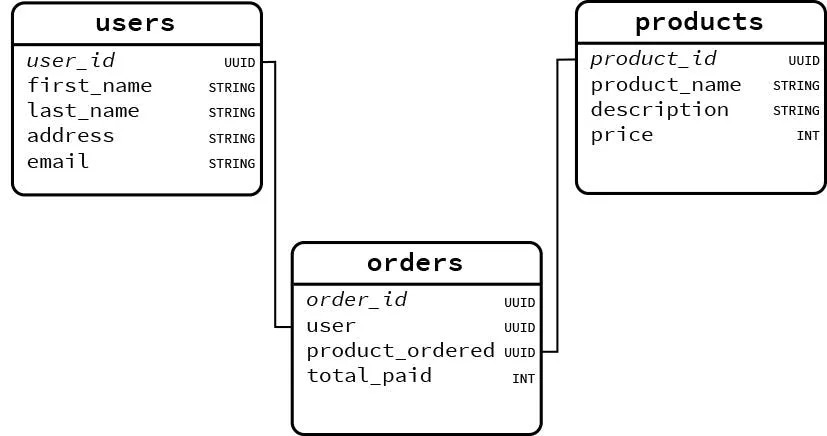How to Design a Database Schema – A Backend Engineer’s Blueprint

What is a Database Schema?
A database schema is like the blueprint or map of your database. It defines how data is organized, stored, and connected. Think of it as the skeleton that holds your app’s data together.
Example: For an e-commerce app like Jumia, the schema decides:
Where customer details are stored.
How orders link to products.
What happens when a user deletes their account.
Step 1: Understand Your Requirements
Before writing a single line of SQL, ask:
What’s the purpose of your app?
Social media? E-commerce? Analytics?
What data do you need to store?
Users, products, orders, posts, etc.
How will the data be used?
Frequent searches? Complex reports? Real-time updates?
Example:
Social Media App: Needs user profiles, posts, comments, likes.
E-Commerce App: Needs products, orders, customers, payments.
Step 2: Identify Entities and Attributes
Entities: “Things” your app manages (e.g.,
Users,Products,Orders).Attributes: Details about those things (e.g.,
User.email,Product.price).
Example for an E-Commerce Schema:
| Entity | Attributes |
|---|---|
Users | user_id, name, email, password |
Products | product_id, name, price, stock |
Orders | order_id, user_id, order_date, total_amount |
Step 3: Define Relationships
How entities interact:
1. One-to-Many
One user can place many orders.
Example:
Users→Orders(linked byuser_id).
2. Many-to-Many
One order can have many products, and one product can be in many orders.
Solution: Create a junction table like
Order_Items.
| Order_Items |order_id,product_id,quantity|
3. One-to-One
Rare. Example: A user has one profile picture.
Step 4: Normalize Your Data
Normalization reduces duplication and ensures consistency.
Rules of Thumb:
1st Normal Form (1NF): Each column holds a single value.
❌ Bad:
tags: "tech, fashion, food"✅ Good: A separate
Tagstable.
2nd Normal Form (2NF): Remove partial dependencies.
Store
product_priceinProducts, notOrders.
3rd Normal Form (3NF): Remove transitive dependencies.
Don’t store
customer_cityinOrdersif it’s already inUsers.
Step 5: Choose Primary and Foreign Keys
Primary Key: Unique identifier for a row (e.g.,
user_id).Foreign Key: Links to another table’s primary key (e.g.,
Orders.user_id→Users.user_id).
Example:
CREATE TABLE Users ( user_id INT PRIMARY KEY, name VARCHAR(50) ); CREATE TABLE Orders ( order_id INT PRIMARY KEY, user_id INT, FOREIGN KEY (user_id) REFERENCES Users(user_id) );
Step 6: Optimize for Performance
1. Indexing
Add indexes to columns used in searches (e.g.,
email,order_date).Example:
CREATE INDEX idx_email ON Users(email);
2. Denormalization (When Needed)
For read-heavy apps (e.g., analytics), duplicate data to speed up queries.
Example: Store
total_ordersinUsersto avoid counting every time.
Example: E-Commerce Schema Diagram
)
Tools to Design Schemas
Pen & Paper: Sketch tables and relationships first.
MySQL Workbench: Visual tool for SQL schemas.
Lucidchart/draw.io: Drag-and-drop diagramming.
Common Mistakes to Avoid
Overcomplicating: Start simple; you can refine later.
Ignoring Future Growth: Plan for scalability (e.g., sharding).
Poor Naming: Use clear names like
order_date, notdate1.
Pro Tip: Use a schema migration tool (e.g., Laravel Migrations) to track changes.
Designing a database schema is like building a house:
Foundation: Clear requirements.
Structure: Tables and relationships.
Polish: Normalization and optimization.
Practice Time: Try designing a schema for a blog (users, posts, comments) and share it in the comments!
What’s Next?
Day 4: Mastering SQL Queries – From Basics to Advanced.
